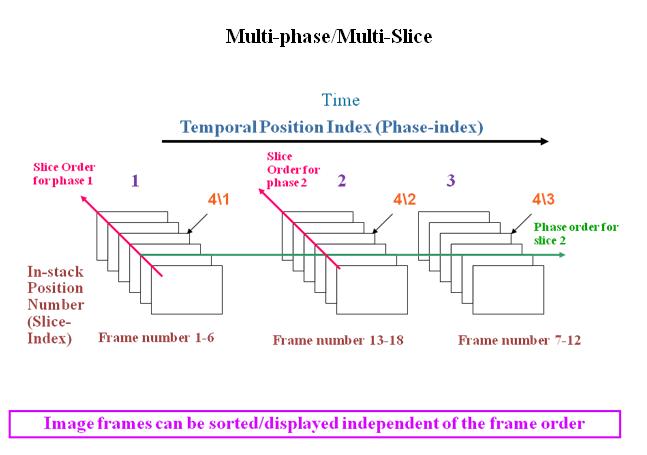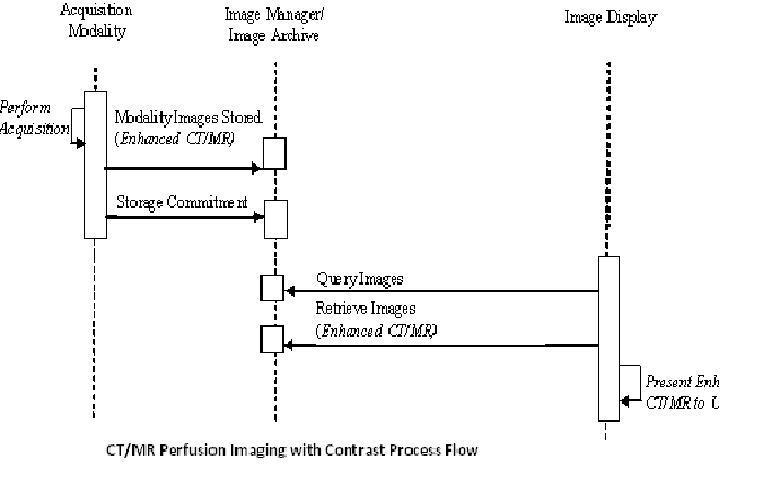MR Diffusion Imaging
MR Diffusion Imaging (DIFF) supports the exchange and display of Enhanced MR diffusion images.
Summary
The MR Diffusion Imaging Integration Profile leverages the Enhanced MR diffusion images containing standard attributes for Diffusion b-value, Diffusion gradient orientation and Diffusion image type. These objects are exchanged in an interoperable way allowing correct and convenient display.

Benefits
Support the Enhanced MR procedures for standard diffusion
- Stacks of Images (Slices) are generated with different meaning and derived contrast for:
- - Diffusion Weighted Images (DWI)
- - Diffusion Tensor Imaging (DTI)
Improves the Consistency and Interoperability of the Enhanced MR Disffusion, clinical applications
- Provides standard attributes for Diffusion b-value, Diffusion gradient orientation and Diffusion image type.
- Reduce implementations diversity of choices for improving interoperability
Improve display
- Creates stacks of images at different timeslots, in order to demonstrate the uptake of a contrast agent over time.
- Defines how the perfusion images are stored and archived into frames of one Enhanced DICOM (Multi-frame) object so that they can later be retrieved and displayed in an unambiguous way on image viewers supporting Enhanced DICOM objects
Improves the acceptance of the Enhanced MR SOP Classes by industry and users
Reduces Deployment Cost/Time
Details
The MR Diffusion Imaging (DIFF) Integration Profile:
- Facilitates the exchange of enhanced MR diffusion images containing standard attributes for Diffusion b-value, Diffusion gradient orientation and Diffusion image type. These objects are exchanged in an interoperable way allowing correct and convenient display.
- Defines how the perfusion images are stored and archived into frames of one Enhanced DICOM (Multi-frame) object so that they can later be retrieved and displayed in an unambiguous way on image viewers supporting Enhanced DICOM objects.
- The images need to be stored with indices along their position in the stack and the progress of time.
- A stack of images is being created at different timeslots, in order to display the contrast agent over time
- Defines the correct and convenient display of the Perfusion with Contrast
- Requirements for the Perfusion Creator modality are:
1. Create an Enhanced CT or MR SOP Instance 2. Modality provides Dimension indices: Stack ID, In Stack Position Number, Temporal Position Index 3. Data requirements: Image and Frame Type should be: Value 1: ORIGINAL, Value 2: PRIMARY, Value 3: PERFUSION
- Requirements for Image Display Perfusion with contrast:
1. Provide at least one viewport for display of frames with the same In-Stack Position Number (Slice-index). More viewports may be used for displaying images for other In-Stack Position Numbers= simultaneous scrolling
2. Scroll by Temporal Position Index then Stack ID / In-Stack Position Number
and by Stack ID / In-Stack Position Number then Temporal Position Index
3. Provide the time since the start, deducted from Frame Reference DateTime
4. Display the values of the dimension attributes and contrast attributes
5. Display Frame annotations for Frame Number, Slice offset, relative time.

Applications using older single-frame DICOM image objects depended on knowledge of private attributes for this information.
Systems Affected
Systems involved in this profile are:
- Image Display that Query / Retrieve the enhanced CT/MR images and displays the viewports of frames with the identical In-Stack Position Number (Slice Ingdex)
- Radiology image manager/archive, Storing the images with indices along their position in the stack and the progress of time.
- Acquisition modalities, creates the Enhanced CR or MR SOP instances with the appropirate dimension indices
Actors & Transactions:
Specification
Profile Status: Trial Implementation
Documents:
Underlying Standards:
See Also
Related Profiles
Consumer Information
Implementer Information
Reference Articles
This page is based on the Profile Template